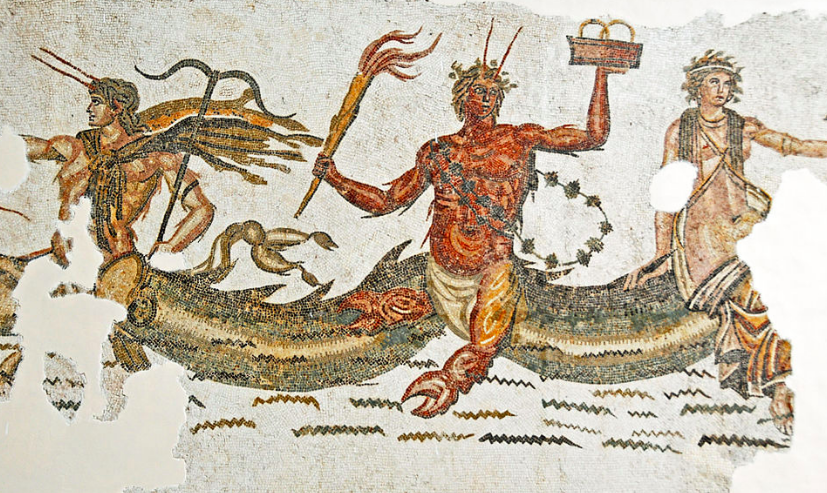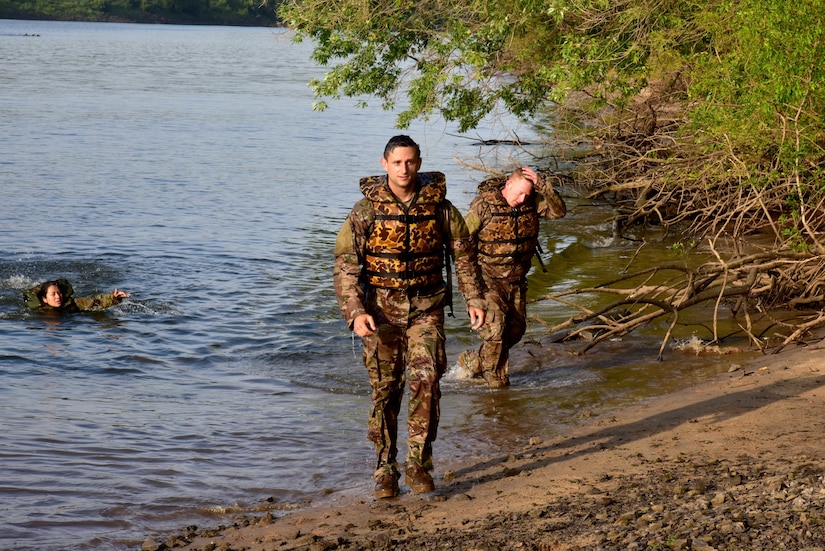 |
1st half: Aristotle's Politics 2nd half: Contemporary Advertising |
Mission Statement
The Rant's mission is to offer information that is useful in business administration, economics, finance, accounting, and everyday life. The mission of the People of God is to be salt of the earth and light of the world. This people is "a most sure seed of unity, hope, and salvation for the whole human race." Its destiny "is the Kingdom of God which has been begun by God himself on earth and which must be further extended until it has been brought to perfection by him at the end of time."
Monday, April 29, 2019
Motivation and Behavior
The study of motivation and behavior is a search for answers to questions about human nature. Recognizing the importance of the human element in organizations, in this post we attempt to develop a theoretical framework that will help managers understand human behavior---not only to understand the "whys" of past behavior, but to some extent to predict, to change, and even to control future behavior.
 |
Theories of Behavior
Let's begin our search for the "whys" of behavior with psychologist Kurt Lewin's fundamental equation of human behavior:
where B represents individual behavior, f means "a function of" or "is caused by," P is the person, and S is the situation. Lewin's equation then suggests that B is a function of something both inside the Person and outside the person in the Situation. This "something" inside the person is motives or needs that is reflected in individual attitudes---the way individuals feel about things---and represented by personality---an individual's tendency to act. P and S are not independent, but rather are interdependent. Persons are influenced by the Situation in which they find themselves, and Situations are influenced by Persons. These are important ideas in the context of "situational," or "contingency," leadership, in which the appropriate leader behavior is determined by the situation. We will revisit this significant point later.
Goal Oriented Behavior
Behavior is basically goal oriented. In other words, our behavior is generally motivated by a desire to attain some specific result. The goal is not always consciously known by the individual. All of us may wonder at times, "Why did I do that?" The reason for our action is not always apparent to the conscious mind. The drives that motivate distinctive individual behavioral patterns ("personality") are to a considerable degree subconscious and, therefore, are not easily accessible for examination and evaluation.

Sigmund Freud was one of the first to recognize the importance of subconscious motivation. He believed that people are not always aware of everything they want; hence, much of their behavior is affected by subconscious motives or needs. In fact, Freud's research convinced him that an analogy could be drawn between the motivation of most people and the structure of an iceberg. In Freud's view, a significant segment of human motivation appears below the surface of the conscious mind as indicated in Figure 1. Therefore, one usually is aware of only a small portion of one's motivation. Some individuals may make no effort to gain self-insight. But even with professional help---for example, psychotherapy---understanding oneself may be a difficult process, yielding varying degrees of success.
Figure 1 Freud's Iceberg Analogy
The basic unit of behavior is an activity. In fact, all behavior is a series of activities. As human beings, we are always doing something:walking, talking, eating, sleeping, working, and the like. In many instances, we are doing more than one activity at a time, such as talking with someone as we walk or drive to work. At any given moment, we may decide to change from one activity or combination of activities to another. This aspect of human nature raises some important questions. Why do people engage in one activity and not another? Why do they change activities? How can we as managers understand, predict, and even control what activity or activities a person may engage in at a given moment? To predict behavior, managers must know which motives or needs of people evoke a certain action at a particular time.
The Causal Sequence
Norman R.F. Maier, the noted industrial psychologist from the University of Michigan, put the elements previously discussed---the situation, person, behavior(s), and activities---together in his classic causal sequence model:
S represents the Situation, or Stimulus; O the person, or Organism; B the Behavior; and A the Activity or Accomplishment. In Maier's words:
Motives
People differ not only in their ability to do, but also in their will to do, or their motivation. The motivation of people depends on the strength of their motives. Motives are sometimes defined as needs, wants, drives, or impulses within the individual. Motives are directed toward goals, which may be conscious or subconscious.
Viktor Frankl, a German psychologist asserted in his book, Man's Search for Meaning, that, "The striving to find a meaning in one's life is the primary motivational force in man." This was the same theme Tom Peters and Robert Waterman used in their best-selling book, In Search of Excellence, particularly in chapter 3, "Man Waiting for Motivation." They observed that, "The dominating need of human beings is to find meaning, . . . to control one's destiny, . . . to be an expert in the promotion and protection of values."
Motives are the "whys" of behavior. They arouse and maintain activity and determine the general direction of the behavior of an individual. In essence, motives or needs are the mainsprings of action. In our discussions we shall use these two terms---motives and needs---interchangeably. In this context, the term need should not be associated with urgency or any pressing desire for something. It simply means something within an individual that prompts that person to action.

Goals
Goals are outside an individual; they are sometimes referred to as "hoped for" rewards toward which motives are directed. These goals are often called incentives by psychologists. However, we prefer not to use that term because many people in our society tend to equate incentives with tangible financial rewards, such as increased pay, although most of us would agree that there are many intangible rewards, such as praise or power, that are just as important in evoking behavior. Managers who are successful in motivating employees are often providing an environment in which appropriate goals (incentives) are available for need satisfaction.
Motive Strength
We have said that motives, or needs, are the reasons underlying behavior. All individuals have many hundreds of needs. All of these needs compete. What, then, determines which of these motives a person will attempt to satisfy through activity? The need with the greatest strength at a particular moment leads to activity.
Changes in Motive Strength
A motive tends to decrease in strength if it is either satisfied or blocked from satisfaction. Satisfied or blocked needs normally do not motivate individuals to further action.

Need Satisfaction
When a need is satisfied, according to Abraham Maslow, it is no longer a motivator of behavior. High-strength needs that are satisfied are sometimes referred to as "satisfied"---that is the need has been satisfied to the extent that some competing need is now more potent. If a high-strength need is thirst, drinking tends to lower the strength of this need, and other needs may now become more potent. Blocking Need Satisfaction The satisfaction of a need may be blocked. Although a reduction in need strength sometimes follows, it does not always occur initially. Instead there may be a tendency for the person to engage in coping behavior. This is an attempt to overcome the obstacle by trial-and-error problem solving. The person may try a variety of behaviors to find one that will accomplish the goal or will reduce tension created by blockage, as illustrated in Figure 2
Figure 2 Coping Behavior When Blockage Occurs in Attempting to Accomplish a Particular Goal
Initially, the coping behavior may be quite rational. Perhaps the person may even make several attempts in direction 1 before going to direction 2, and make several attempts in direction 2 before moving in direction 3, where some degree of perceived success and goal attainment is finally achieved.
If people continue to strive for something without success, they may substitute goals that satisfy the need. For example, if Mary has a strong desire to be a CPA but continually receives average grades in accounting, she may be willing eventually to settle for another career in business.
:max_bytes(150000):strip_icc()/ThePleiades-5c6b6051c9e77c000119fbf3.jpg)
Cognitive Dissonance
Blocked motives and continually unsuccessful rational coping behavior may lead to forms of irrational coping behavior. Leon Festinger analyzed this phenomenon. His theory of cognitive dissonance deals primarily with the relationships that exist between perceptions people have about themselves and their environment. When individual perceptions have nothing to do with each other, they are considered irrelevant to each other. If one supports the other, they are said to be in a consonant relationship. Dissonance is created when two perceptions that are relevant to each other are in conflict. This situation creates tension, which is psychologically uncomfortable and causes the individual to try to modify one of the incompatible perceptions so as to reduce the tension or dissonance. In a sense, that person engages in coping behavior to regain a condition of consonance or equilibrium. For example, Festinger did research that showed that "heavy smokers are less likely to believe that there is a relationship between smoking and lung cancer than non-smokers." In other words, if they cannot give up smoking, they can at least remain skeptical about research that reports harmful effects. The same phenomenon is at work when a person goes out fishing all day, doesn't catch anything, and remarks about the beautiful weather.
Frustration
The blocking or thwarting of goal attainment is referred to as frustration. This phenomenon is defined in terms of the condition of the individual, rather than in terms of the external environment. A person may be frustrated by an imaginary barrier and may fail to be frustrated by a real barrier.
As previously discussed, rational coping behavior can lead to alternative goal decreasing need strength. Irrational behavior may occur in several forms when blockage to goal accomplishment continues and frustration develops. Frustration may increase to the extent that the individual engages in aggressive behavior.

Aggression can lead to destructive behavior such as hostility and striking out. Freud was one of the first to demonstrate that hostility or rage can be exhibited by an individual in a variety of ways. If possible, individuals will direct their hostility against the object or the person that they feel is the cause of frustration. Angry workers may try to hurt their boss through gossip and other malicious behavior. Often, however, people cannot attack the cause of their frustration directly, and they may look for a scapegoat as a target for their hostility. Scapegoats may be other workers, family members, or innocent pets.
As Norman R.F. Maier said, aggression is only one way in which frustration can be shown. Other forms of frustrated behavior---such as rationalization, regression, fixation, and resignation---may develop if pressures continue or increase.
Rationalization simply means making excuses. For example, an individual might blame someone else for an inability to accomplish a given goal: "It was my boss's fault that I didn't get a raise." Or the person may downgrade the desirability of that particular goal: "I don't want to do that anyway."
Regression is essentially not acting one's age. "Frustrated people tend to give up constructive attempts at solving their problems and regress to more primitive and childish behavior." A person who cannot start the car and proceeds to kick it is demonstrating regressive behavior; so too is a manager who throws a temper tantrum when annoyed and frustrated. Roger G. Barker, Tamara Dembo, and Kurt Lewin showed experimentally that when children are exposed to mild frustration, their play may resemble that of a child two or more years younger.

Fixation occurs when a person continues the same behavior pattern over and over again, even though experience has shown that it can accomplish nothing. Thus, "frustration can freeze old and habitual responses and prevent the use of new and more effectual ones." Maier showed that although habits are normally broken when they bring no satisfaction or lead to punishment, a fixation actually becomes stronger under those circumstances. In fact, he argued that it is possible to change a habit into a fixation by too much punishment. This phenomenon is seen in children who blindly continue to behave in an objectionable manner after being severely punished. Thus, Maier concluded that punishment can have two effects on behavior. It may either eliminate the undesirable behavior or lead to fixation and other symptoms of frustration as well. It follows that punishment may be a dangerous management tool, because its effects are difficult to predict. According to James A.C. Brown, common symptoms of fixation in industry are, "the inability to accept change, the blind and stubborn refusal to accept new facts when experience has shown the old ones to be untenable, and the type of behavior exemplified by the manager who continues to increase penalties" even when doing so is only making conditions worse.
\
Resignation or apathy occurs after prolonged frustration, when people lose hope of accomplishing their goal(s) in a particular situation and withdraw from reality and the source of their frustration. This phenomenon is characteristic of people in boring, routine jobs, where often they resign themselves to the fact that there is little hope for improvement within their environments.
A manager should remember that aggression, rationalization, regression, fixation, and resignation are all symptoms of frustration and may be indications that problems exist.

Increasing Motive Strength
Behavior may change if an existing need increases in strength to the extent that it is now the high-strength motive. The strength of some needs tends to appear in a cyclical patter. For example, the need for food tends to recur regardless of how well it has been satisfied at a given moment. One can increase or delay the speed of this cyclical pattern by affecting the environment. For example, a person's need for food may not be high-strength unless the immediate environment is changed such that the senses are exposed to the sight and the aroma of tempting food.
People have a variety of needs at any given time. They may be hungry, thirsty, and tired, but the need with the highest strength will determine what they do. All of these needs tend to be cyclical over time.
*SOURCE: MANAGEMENT OF ORGANIZATIONAL BEHAVIOR: LEADING HUMAN RESOURCES, 8TH ED., 2001, PAUL HERSEY, KENNETH H. BLANCHARD, DEWEY E. JOHNSON, PGS. 22-28*
end
|
Friday, April 26, 2019
Leading Human Resources: An Analysis (part 5)
Ingredients for Effective Human Skills
by
Charles Lamson
If one accepts the fact that human skill development is important, one may ask what kind of expertise managers and leaders must have in order to influence the behavior of other people. Managers need three levels of expertise. They must understand past and current behavior, be able to predict behavior, and learn to direct, change, and control behavior.
 |
Understanding Behavior
First, managers need to understand why people behave as they do. To get things done through other people, you have to know why they engage in certain characteristic behaviors.
What motivates people? What produces the patterns of behavior that are characteristic of individuals or groups? Motivation and its causes are the areas on which most of the literature in the behavioral sciences focuses. In both popular and scholarly books and periodicals, there are literally hundreds of different classifications that are useful in communicating the patterns of behavior that describe individuals and groups interacting with other people. We can say a person is energetic or distracted or is a task leader or a team leader, and so on. All these are useful classifications for communicating to others why an individual or group is behaving in certain ways.
Predicting Behavior
Understanding past behavior is important in itself for developing effective human skills, and it also provides a framework for the next level of expertise---predicting behavior. Understanding why people did what they did yesterday enables a supervisor to predict how they are likely to behave tomorrow, next week, and next month under similar as well as changing environmental conditions.
Directing, Changing, and Controlling Behavior
The next level of expertise that an effective manager or leader needs is the ability to direct, change, and control behavior. (You must also accept the responsibility for influencing the behavior of others in accomplishing tasks and reaching goals.)
Note that the first two skills are passive; understanding and predicting do not require actions involving other people. The key to obtaining results is developing the skills needed to direct, change, and control the efforts of people in the accomplishment of organizational goals. That is where the manager translates thoughts and intentions into end results.

Controlling People
People who hear the word control often ask, "Does that mean that we have to manipulate others?" Words that suggest control and manipulation sometimes have a negative connotation to many people. When you accept the role of leader, however, you accept along with it the responsibility of having an impact on the behavior of other people---influencing the behavior of others toward achieving results.That is true whether you are at work striving to gain the commitment of your people, or at home attempting to assist your children in developing their basic values.
It is also important to remember that words are simply packages of ideas and, as such, are often misinterpreted. If manipulation means taking unfair advantage, being deceitful, and influencing others for self-interest, then it has a negative connotation. On the other hand, if manipulation means using influence and strategies skillfully and managing people fairly for mutually rewarding and productive purposes, it is an appropriate and necessary means for goal accomplishment.
If you are still concerned about words such as control or manipulation, think instead of training or facilitating. Whatever words you chose, your overall effectiveness depends upon understanding, predicting, and influencing the behavior of other people.
A Hammer Won't Always Do the Job
For every job, there is an appropriate tool. Hammers are great for pounding nails. You could also use a hammer to cut a two-by-four, but it would leave a lot of rough edges. For that particular job, there is a better tool. To build effectively, you need a variety of tools, and the knowledge of how to use them.
The same is true for leadership and management. It is unrealistic to think that a single tool is all that is needed to manage effectively. If all you have is a hammer, then all you will see are nails. Many people fall into the trap of relying on the latest fad to solve all their management problems. They seem to develop an unrealistic assumption of what this new idea will do for them. Many useful management tools have been developed over the years. But you should know what to expect from them and, just as important, what not to expect. You need to understand and be able to use different tools when leading and managing people.

Learning to Apply Behavioral Science Theory
Learning to apply behavioral science theory is much like learning anything; for example, you learn to hit a baseball by stepping up to the plate and attempting to hit---by practice, by doing what you're attempting to learn. There is no way you are going to learn to hit a baseball by merely reading books (even those by people considered to be experts in the field) or by watching (in person or on slow-motion film) great hitters. All those methods will do is give you conceptual knowledge of how to hit a baseball.
Psychologists define learning as a change in behavior---being able to do something different from what you were able to do before. So, in watching others and reading about them, we can perhaps change our knowledge or change our attitude. If we actually want to learn something, we have to "try on," or practice, that which we want to learn to make part of our relevant behavior.
Another thing to keep in mind in terms of learning is how you feel about learning something new. How did you feel the first time you ever tried to hit a baseball? If you were like most people, you felt anxious, nervous, and uncomfortable. This is the way most of us feel any time we attempt to do something new---something significantly different from the things we are already comfortable doing.
It is the same with learning to use behavioral science. Much of what you read in this analysis becomes relevant only if you are willing to "try on" some new behaviors. If you are, you should recognize that the first time you try on a new pattern of behavior in terms of attempting to implement behavioral science theory, you are going to feel ill at ease. We have to go through a period of "unfreezing" if we want to learn.

Another caution is to be patient---give the new behavior time to work. If you are up at bat attempting to hit a baseball for the first time, what is the probability that you will get a base hit from the first ball the pitcher delivers? The probability is low. It is not any different in learning behavioral science theory. The first time you attempt to behave differently on the basis of a new theory, you probably will be less effective than you would have been had you used your old style of behavior (although in the long run the new style may have a higher probability of success). Practitioners who go through a training experience in which they learn new knowledge and attitudes often find when trying on the new behavior for the first time, that it does not work. As a result, they begin to respond negatively to the whole training experience, saying such things as, "How can we accept these things?" "They are not usable." "They do not work in the real world." It is this kind of attitude that has hindered managers from attempting to make behavioral science theory an integral part of managing more effectively. All of us have to recognize that, just like hitting a baseball, applying behavioral science theory takes practice. The first few times up, the probability of success is quite low. But the more we practice, the more we attempt to get relevant feedback, the more the probability of success will increase.
To be continued...
*SOURCE: MANAGEMENT OF ORGANIZATIONAL BEHAVIOR: LEADING HUMAN RESOURCES, 8TH ED., 2001, PAULE HERSEY, KENNETH H. BLANCHARD, DEWEY E. JOHNSON, PGS. 15-18*
end
|
Thursday, April 25, 2019
Leading Human Resources: An Analysis (part 4)
Three Competencies of Leadership
by
Charles Lamson
Leading or influencing requires three general skills, or competencies: (1) diagnosing---understanding the situation you are trying to influence; (2) adapting---altering your behavior and the other resources you have available to meet the contingencies of the situation; and (3) communicating---interacting with others in a way that people can understand and accept. We will discuss each of these competencies in greater detail in subsequent posts, but for now here is a brief summary of each.
- Diagnosing is a cognitive---or cerebral---competency. It is understanding what the situation is now and knowing what you can reasonably expect to make it in the future. The discrepancy between the two is the problem to be solved. This discrepancy is what the other competencies are aimed at resolving.
- Adapting is a behavioral competency. It involves adapting your behaviors and other resources in a way that helps close the gap between the current situation and what you want to achieve.
- Communicating is a process competency. Even if you are able to understand the situation, even if you are able to adapt behavior and resources to meet the situation, you need to communicate effectively. If you cannot communicate in a way that people can understand and accept, you will be unlikely to meet your goal.
Management Process
Many authors consider the managerial functions of planning, organizing, motivating, and controlling to be central to any discussion of management. These functions, which constitute the management process (a step-by-step way of doing something) are relevant regardless of the type of organization or level of management being discussed. As Harold Koontz and Cyril O'Donnel said: "Acting in their managerial capacity, presidents, department heads, foremen, supervisors, college deans, bishops, and heads of governmental agencies all do the same thing. As managers they are all engaged, in part, in getting things done with and through people. As a manager, each must, at one time or another, carry out all the duties characteristic of managers." In today's world, even a well-run household uses these managerial functions.
Planning involves setting goals and objectives for the organization and developing "work maps" showing how those goals and objectives are to be accomplished. Once plans have been made, organizing becomes meaningful. This step involves bringing together resources---people, capital, and equipment---in the most effective way to accomplish the goals. Organizing, therefore, involves an integration of resources. Along with planning and organizing, motivating plays a large part in determining the level of performance of employees, which, in turn, influences how effectively the organizational goals will be met. Motivating is sometimes included as part of directing, along with communicating and leading. In his research on motivation, William James of Harvard found that hourly employees could maintain their jobs (that is, not be fired) by working at approximately 20 to 30 percent of their ability. His study also showed that highly motivated employees work at close to 80 to 90 percent of their ability. If motivation is low, employees' performance will suffer as much as if their ability were low. For this reason, motivating is an extremely important function of management.  Another function of management is controlling. This involves feedback of results and follow-up to compare accomplishments with plans and to make appropriate adjustments where outcomes have deviated from expectations. Although these management functions are stated separately and seem to have a specific sequence, one must remember that they are interrelated. At any one time, however, one or more functions may be of primary importance. Skills of a Manager There is a general agreement that at least three areas of skill are necessary for the process of management: technical, human, and conceptual.
The appropriate mix of these skills varies as an individual advances in management from supervisory to top management positions.
Proportionately less technical skill tends to be needed as one advances from lower to higher levels in the organization, but more conceptual skill is necessary. Supervisors at lower levels need considerable technical skill because they are often required to train and develop technicians and other employees in their sections. At the other extreme, executives in a business organization do not need to know how to perform all the specific tasks at the operational level. However, they should be able to see how all these functions are interrelated in accomplishing the goals of the total organization. This ability is particularly important because the executives' focus at the higher organizational levels is increasingly more external and global.
The amount of technical and conceptual skills needed at these different levels of management varies; the area of human skill appears to be crucial at all levels.
*SOURCE: MANAGEMENT OF ORGANIZATIONAL BEHAVIOR: LEADING HUMAN RESOURCES, 8TH ED., 2001, PAUL HERSEY, KENNETH H. BLANCHARD, DEWEY E. JOHNSON, PGS 11-14*
end
|
Wednesday, April 24, 2019
Leading Human Resources: An Analysis (part 3)
Management: An Applied Behavioral Sciences Approach (part C)
by
Charles Lamson
A Look Back
The transformation of American society has been amazing. We have progressed from a basically agrarian society to a dynamic industrial society, with a higher level of education and standard of living than was ever thought possible. In addition, our society and technical advancement staggers the imagination.
This progress has not been without its seamy side. At a time when we should be rejoicing in a golden age of plenty, we find ourselves embroiled in conflict---conflict between nations, conflict between races, conflict between managers and workers, even conflict between neighbors. These problems that we face cannot be solved by scientific and technical skills alone; they will require social skills. Many of our most critical problems are not in the world of things, but in the world of people. Our greatest failure as human beings has been the inability to secure cooperation and understanding with others. Shortly after World War II, Elton Mayo recognized this problem when he reflected that "the consequences for society of the unbalance between the development of technical and social skills have been disastrous."
Management Defined
Any review of the literature will quickly show that there are almost as many definitions of management as there are writers in the field. A common thread that appears in these definitions is that the manager is required to accomplish organizational goals or objectives. We shall define management as the process of working with and through individuals and groups and other resources (such as equipment, capital, and technology) to accomplish organizational goals.
This definition, it should be noted, does not specify business or industrial organizations. Management, as defined, applies to organizations whether they are businesses, educational institutions, hospitals, political or military organizations, or even families. To be successful, these organizations require their management personnel to have interpersonal skills. The achievement of organizational objectives through leadership is management. Thus, everyone is a manager in at least certain activities.
Leadership Defined
In essence, leadership is a broader concept than management. Management is a special kind of leadership in which the achievement of organizational goals is paramount. The important distinction between the two, therefore, lies in the term organizational goals. Our definition of leadership is that leadership occurs whenever one person attempts to influence the behavior of an individual or a group, regardless of the reason. It may be for one's own goals or the goals of others, and these goals may or may not be congruent with organizational goals.

Distinctions Between Management and Leadership
Warren Bennis, a highly regarded leadership scholar, differentiated the extremes of management and leadership in a number of provocative ways:
Leaders conquer the context---the volatile, turbulent, ambiguous surroundings that sometimes seem to conspire against us and will surely suffocate us if we let them---while managers surrender to it. The manager administrates; the leader innovates. The manager is a copy; the leader is an original. The manager maintains; the leader develops. The manager focuses on systems and structure; the leader focuses on people. The manager relies on control; the leader inspires trust. The manager has a short-range view; the leader has a long-range perspective. The manager asks how and when; the leader asks what and why. The manager has an eye on the bottom line; the leader has his eye on the horizon. The manager initiates; the leader originates. The manager accepts the status quo; the leader challenges it. . . . Managers do things right; leaders do the right things.
Are Management and Leadership Really Necessary?
Perhaps concerns felt by people are such that leadership and management cannot effect change or solve problems. Let's look at one study, in which 500 respondents in a variety of organizations were asked to rank their concerns. The results are listed in Table 1.
Table 1 Top Ten Leadership and Management Concerns
Every concern is the result of ineffective leadership and management, and can be corrected by enlightened leadership and management. This brings us to a central theme of this analysis. The effective management of human organizations comes down to the one-on-one or one-on-a-group influence process. Performance starts with this essential building block.

RHI Management Resources, a division of Robert Half International, Inc., initiated a national survey of executives with the United States' 1000 largest companies. The executives were asked, "Which of the following management skills do you believe to be the most valuable?" The results are shown in Table 2.
Table 2 Valuable Management Skills
Cecil Gregg, executive director of RHI Management Resorces, observed, "Today's growth economy has businesses moving rapidly to keep up with expansion efforts . . . amid this environment, leadership skills are critical.
Peter Drucker, one of the most influential and respected observers of management, confirms our view.
The center of a modern society is the managed institution. The managed institution is society's way of getting things done these days. In addition, management is the specific tool, the specific function, and the specific instrument to make institutions capable of producing results. The institution, in short, does not simply exist within and react to society. It exists to produce results on and in society.
Are Leaders Born or Made?
Whether leadership can be learned is an issue that has perplexed researchers for decades and one that has important implications for the readers of this blog. If leaders are born, why spend time reading and developing your skills? Your leadership success or failure has already been determined. If leaders are made, then everyone can become a leader, and there is hope for us all. As Jay Conger suggests, "These perspectives are quite different, and their implications for the training and development of leaders are profoundly different. If leadership ability is genetically determined, training could hardly play a role in its development. But if leadership is learned through experience, training might well be used to develop new skills and to help synthesize past experiences into useful insights.

My position, and that of almost all other leadership researchers as well, is that leaders are both born and made, particularly within the broad context of leadership that is covered in this analysis. In a later post, we will discuss some of the traits that may contribute to and facilitate leader effectiveness, such as intelligence, physical energy, and social potential. But formal and informal experience also play a critical role; in particular, "Work experience, hardship, opportunity, education, role models, and mentors all go together to craft a leader." Learning and practicing the leadership skills presented in this analysis will enhance every potential leader's effectiveness.
To be continued...
*SOURCE: MANAGEMENT OF ORGANIZATIONAL BEHAVIOR: LEADING HUMAN RESOURCES, 8TH ED., 2001, PAUL HERSEY, KENNETH H. BLANCHARD, DEWEY E. JOHNSON, PGS. 8-11*
end
|
Subscribe to:
Posts (Atom)
What clarity can I ask the Lord in my doubts? Do I believe He can bring that clarity?
Key Points You can ask God for clarity in understanding His will, direction in life decisions, peace in uncertainty, and strength to overcom...

-
INTRODUCING CHANGE by Charles Lamson What elements influence others to buy into an idea or product? Researchers and practitioners ask t...
-
1 Peter 2:24 : "He himself bore our sins in his body on the cross, so that we might die to sins and live for righteousness; 'by hi...






